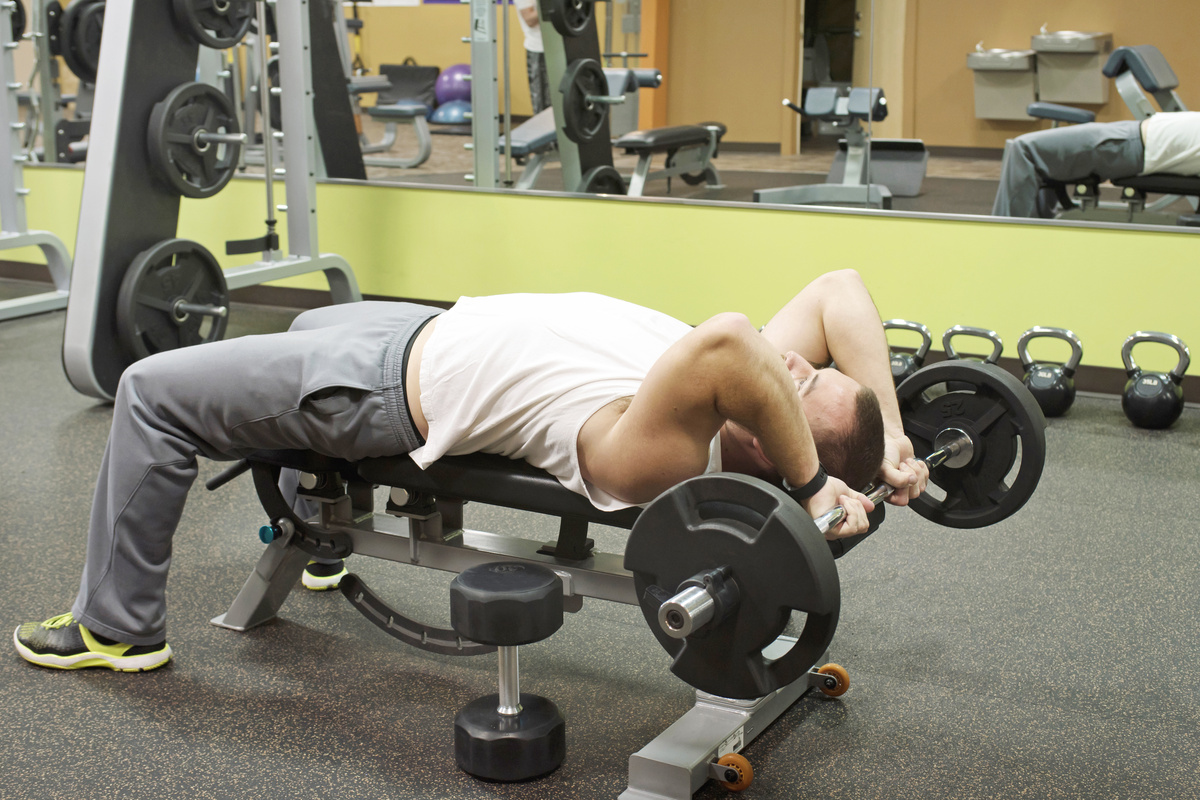
Skull crushers is an intriguing name for an exercise. But do not worry; it is doable. Skull crushers focus on developing your triceps, which are the muscles located on the back of your arm and have three attachment points at one end.
Keep reading to discover valuable information about the exercise, such as how to do skull crushers, its benefits, and the recommended frequency. It is time to dive in.
What are the benefits of skull crushers?

Skull crushers help you to utilize the triceps’ primary function, which is to extend the elbow. This can significantly add mass to your triceps and make them stronger.
A study has shown that targeted tricep exercises can increase bench press strength, and skull crushers are one such exercise. In other words, stronger triceps will help you do other exercises like the bench press with ease.
Additionally, skull crushers activate the medial head of the triceps. These muscles extend the elbows, which improves force production for throwing muscles like the serratus anterior, rhomboid minor and major, and scapula. This can impact activities like football, baseball, and other sports that involve throwing.
How to perform skull crushers

There are different variations to skull crushers, but this guide will cover the most common variation and everything you need to know to do it correctly.
- To get started, you will need a flat gym bench and a good dumbbell of your preferred weight; ensure you do not exceed your limit.
- Lie on your back with each leg on either side of the bench or rested on the footrest; make sure you are comfortable in this position.
- Get into your starting position by holding the dumbbell with both hands, then lift it above your chest; place your fists vertically.
- Move your hands towards the back of your head, ensuring you are holding on firmly to the dumbbells. To do this, you will bend your elbows while keeping your upper arms straight and at a right angle to your body.
- Move your hands further down and lower the dumbbell behind your head until its top aligns with the edge of the bench.
- Hold that position for a few seconds before bringing it back up to the starting position by reversing your movement.
- Repeat the process for 2 to 4 sets of 8 to 10 reps.
Things to avoid when doing skull crushers

Uncontrolled descent
Learn to control your dumbbells while descending. Slowing down the movement can increase the stimulation of your triceps and shoulders. So, do not rush to take them behind your head or bring them back up to help you prevent injuries.
Bad form
The perfect form for skull crushers is to keep your elbows and wrists not too close or far apart — they should be shoulder-width apart. Also, do not let your elbows flare out, as this can lead to shoulder injuries and diminish the effectiveness of your exercise.
Lack of moderation
You should avoid going too heavy or too light when doing skull crushers. Reps between 10 and 20 are okay; doing less may not get you the desired results, and doing too much may cause injuries and muscle fatigue. Also, do not use a dumbbell that is too light or heavy.
Descent sequence
There are two ways to begin the skull crusher movement: You can move your hands backward and then start bending your elbows, or you can bend your elbows first and then move your hands backward. To avoid mistakes, you should follow these methods.
How often should you do skull crushers for results?

For best results, add skull crushers to your exercise routine. If you are looking to build strength, you can do fewer reps with heavier weight, but if you want to build muscle endurance, you can try more reps with lighter weight.
However, regardless of what you are trying to achieve and your routine, keep in mind that you need to be consistent to get good results.
Editors' Recommendations
- How to do a goblet squat: Your complete guide
- Do you need intra workout carbs?
- How to do lateral raises the right way
- How to train for a 5K: What you need to know
- Should you do cardio before or after weights? The answer depends on your goals



